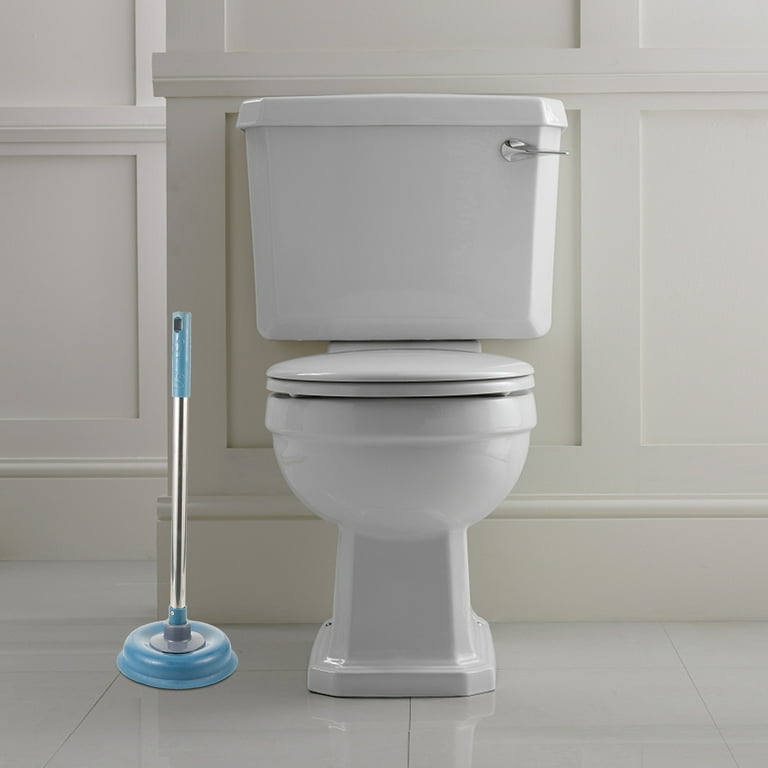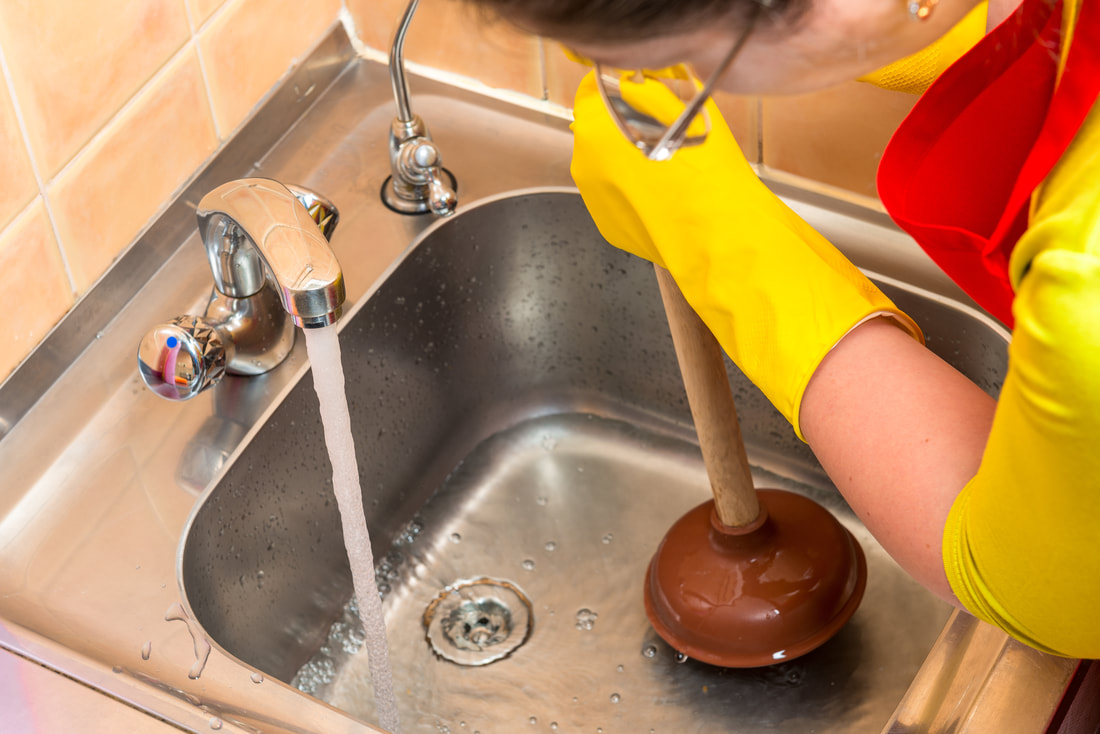Right here on the next paragraphs yow will discover a lot of worthwhile details all about How to Unclog Your Sink with a Plunger.

Introduction
Proper upkeep of home drains pipes is necessary for preventing blockages and ensuring smooth water circulation. One of the secret tools in every property owner's toolkit is the plunger, along with various drainpipe cleaners designed to tackle persistent clogs successfully. This post discovers exactly how to use plungers and drainpipe cleaners efficiently to keep your drains streaming openly.
Area 1: Understanding Bettors
Sorts of Plungers
There are numerous kinds of bettors available, each designed for various kinds of drains pipes and obstructs. The most typical types include cup bettors, flange bettors, and accordion bettors.
Exactly How Plungers Job
Plungers deal with the concept of producing stress and suction to remove obstructions. When properly used over a drainpipe, they produce a vacuum cleaner that can take out debris or break up obstructions.
Selecting the Right Bettor
Selecting the right plunger depends on the type of drainpipe and the nature of the obstruction. Cup plungers are optimal for sinks and bathtubs, while flange bettors are better matched for toilets because of their layout.
Typical Blunders with Bettors
Avoiding these mistakes guarantees reliable plunging: incorrect seal around the drain, insufficient force, and not clearing surrounding debris.
Section 2: Making Use Of Plungers Effectively
Prep work
Before plunging, make sure the plunger covers the drain totally and creates a tight seal. Clear any type of noticeable particles around the drainpipe opening.
Strategy
Beginning with gentle plunging motions to construct suction. Boost pressure gradually, using a steady rhythm. Repeat as necessary till the drain clears.
Repairing Tips
If plunging does not work, attempt readjusting the seal, applying oil jelly for a much better seal, or utilizing a different sort of plunger.
Area 3: Recognizing Drainpipe Cleaning Company
Types of Drain Cleansers
Drain cleansers can be chemical or enzymatic. Chemical cleansers use strong chemicals to dissolve obstructions, while chemical cleaners use all-natural enzymes to break down organic matter.
Just How Drainpipe Cleaners Job
Chemical cleaners respond with blockages to liquify them, while enzymatic cleansers break down organic products like hair and grease without hurting pipelines.
Security Considerations
Constantly put on gloves and eye security when making use of chemical drain cleaners. Make sure adequate ventilation and comply with maker guidelines thoroughly.
Eco-Friendly Alternatives
Think about making use of vinegar and cooking soft drink or enzyme-based cleansers for environmentally friendly choices that are much safer for pipes and the environment.
Section 4: Using Drain Cleaners Effectively
Application Strategies
Put chemical cleansers directly into the drainpipe opening. Permit them to help the suggested time before purging with warm water. Enzymatic cleansers must sit overnight.
Precautions
Avoid mixing different types of cleansers, as this can produce hazardous fumes. Never utilize chemical cleaners together with a plunger, as splashing can happen.
Handling Stubborn Clogs
For persistent clogs, consider making use of a plumbing snake or calling a professional plumbing to stop damage to pipelines.
Verdict
Finally, recognizing just how to make use of bettors and drainpipe cleaners effectively is vital for keeping healthy and balanced plumbing systems. By picking the right tools and strategies, home owners can deal with small blockages and prevent significant pipes problems down the line.
How To Properly Use A Plumbing Snake To Clear Drains
When any drain clogs in our home arise, we tend to gravitate toward the plunger and little else. In cases where the plunger and its vacuum-created pressure are not able to clear clogs, many immediately move to harmful chemicals or simply call their plumber to fix the issue.
we’re happy to help with all drain cleaning needs and concerns. This includes informing you on a few other home remedies you may have at your disposal for minor to moderate clogs, one of which is the use of a plumbing snake. Many people have never used one of these before – let’s go over the steps to take when your drain clogs and you have a plumbing snake available.
Attempt Plunger Use
The first step here, as we noted above, should indeed be to grab your plunger when you notice a drain clog and attempt to resolve it this way. If you’re unsure how to use a particular type of plunger, our plumbers can answer any questions you have. If this doesn’t do the trick, however, you move on to the snake.
Locate And Prepare Snake
A plumbing snake is a metal or plastic device that’s generally about a quarter of an inch thick. It’s design with significant extensions, meant to reach down into your clogged drain and push the clog out. Snakes also contain drain augers that will latch onto and push stubborn blockages.
If your plunger doesn’t clear a clog, locate your snake and bring it to the drain in question. We also recommend keeping a bucket nearby to collect the clog once you pull it out, plus we’d advise wearing goggles and possibly protective gloves.
Feed Snake
Once you’re ready to go, feed the snake slowly down the drain, using the crank device it comes with to keep it moving until it finds the clog. Once this happens, much of the clog will be latched onto the coil so you can pull it out, while the rest will simply break up and flow downward.
Detach Debris
Remove the snake slowly from the drain, and once you’ve done so, pick off any debris that’s stuck to the coil. This is another area where wearing gloves is a must.
Flush Drain
Finally, take a few minutes to ensure the snake has done its job correctly. If you’ve been using it on a toilet, flush the toilet a couple times and make sure everything flows well. If you’ve used it on a different drain, flush it with some room temperature water.
https://www.mybuddytheplumber.com/blog/how-to-properly-use-a-plumbing-snake-to-clear-drains/

Application Strategies
Put chemical cleansers directly into the drainpipe opening. Permit them to help the suggested time before purging with warm water. Enzymatic cleansers must sit overnight.
Precautions
Avoid mixing different types of cleansers, as this can produce hazardous fumes. Never utilize chemical cleaners together with a plunger, as splashing can happen.
Handling Stubborn Clogs
For persistent clogs, consider making use of a plumbing snake or calling a professional plumbing to stop damage to pipelines.
Verdict
Finally, recognizing just how to make use of bettors and drainpipe cleaners effectively is vital for keeping healthy and balanced plumbing systems. By picking the right tools and strategies, home owners can deal with small blockages and prevent significant pipes problems down the line.
How To Properly Use A Plumbing Snake To Clear Drains
When any drain clogs in our home arise, we tend to gravitate toward the plunger and little else. In cases where the plunger and its vacuum-created pressure are not able to clear clogs, many immediately move to harmful chemicals or simply call their plumber to fix the issue.
we’re happy to help with all drain cleaning needs and concerns. This includes informing you on a few other home remedies you may have at your disposal for minor to moderate clogs, one of which is the use of a plumbing snake. Many people have never used one of these before – let’s go over the steps to take when your drain clogs and you have a plumbing snake available.
Attempt Plunger Use
The first step here, as we noted above, should indeed be to grab your plunger when you notice a drain clog and attempt to resolve it this way. If you’re unsure how to use a particular type of plunger, our plumbers can answer any questions you have. If this doesn’t do the trick, however, you move on to the snake.
Locate And Prepare Snake
A plumbing snake is a metal or plastic device that’s generally about a quarter of an inch thick. It’s design with significant extensions, meant to reach down into your clogged drain and push the clog out. Snakes also contain drain augers that will latch onto and push stubborn blockages.
If your plunger doesn’t clear a clog, locate your snake and bring it to the drain in question. We also recommend keeping a bucket nearby to collect the clog once you pull it out, plus we’d advise wearing goggles and possibly protective gloves.
Feed Snake
Once you’re ready to go, feed the snake slowly down the drain, using the crank device it comes with to keep it moving until it finds the clog. Once this happens, much of the clog will be latched onto the coil so you can pull it out, while the rest will simply break up and flow downward.
Detach Debris
Remove the snake slowly from the drain, and once you’ve done so, pick off any debris that’s stuck to the coil. This is another area where wearing gloves is a must.
Flush Drain
Finally, take a few minutes to ensure the snake has done its job correctly. If you’ve been using it on a toilet, flush the toilet a couple times and make sure everything flows well. If you’ve used it on a different drain, flush it with some room temperature water.
https://www.mybuddytheplumber.com/blog/how-to-properly-use-a-plumbing-snake-to-clear-drains/

Do you appreciate reading about Here's How to Correctly Use a Toilet Plunger? Make feedback down below. We would be glad to find out your suggestions about this posting. In hopes that you come back again soon. So long as you appreciated our blog post if you please don't forget to share it. Thanks a lot for going through it.
Need Help? Hire Us Now!